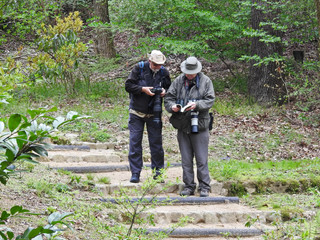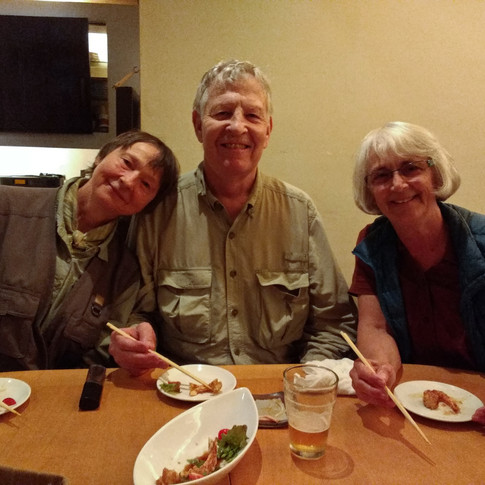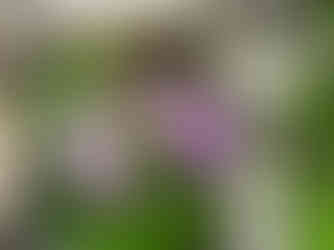JAPAN (Osaka & Tokyo)
- J & J Cosgrove
- Oct 22, 2019
- 6 min read
Updated: Apr 18, 2020
In October 2018, we read a posting from a member of the Victoria Natural History Society (VNHS) that a Norwegian Cruise Line ship would be making a repositioning trip from Yokohama, Japan to Vancouver, Canada during the month of May 2019. The cruise was being offered at a very reasonable price, with on-board perks for those who registered early so we signed up, along with 16 other birders from the Victoria area.
We opted to travel to Japan for two weeks before the ship left Yokohama. Some of our fellow travelers choose to see other parts of Japan before the cruise but we choose Osaka and Tokyo as our two main areas. Jim contacted a “Birding Pal” via the internet and we arranged to meet Mr. Hashimoto in Osaka for 4 days of birding. Mark Yunker and Janet Erasmus joined us for this early introduction to Japan.
A 2:00 A.M. flight from Vancouver to Taipei, China on April 23 (yes, after midnight but we slept on the plane) and then a hop from Taipei to the port city of Osaka, Japan. On check-in at YVR (Vancouver), we were asked about our one-way plane ticket as this scenario can be problematic for the airlines. So, we needed to prove that we were not staying in Japan. Since all of our cruise line tickets were in the checked baggage ( we won't do that again), we scrounged around in our carry-on and found the extended health insurance forms which showed our final destination as Vancouver. “Amazing Race” isn’t the only place you can find road blocks.
Click on the photos for a larger, complete image and/or hover over photos for text
Since we couldn’t access our rooms early at our hotel in Osaka, we wandered the streets and along the river, near the hotel. When we returned to the hotel, we found several hours of sleep to adjust our biological clocks.
The next morning, we met Hashimoto-san who very graciously showed us a number of birding areas, within driving distance of Osaka. He would meet us each morning, after having ridden his bicycle to our hotel. Mark took on driving the rental car for us – thank you, Mark.
Day 1 (April 25) took us to the grounds of Osaka Castle where we noticed that many local birders would approach Hashimoto-san and bow to him. This acknowledgement meant we had picked a winner to show us the birds of the Kansai region.
The fact that there were a lot of local birders at the Castle grounds also meant that we were in a hot spot and we did see some very rare birds such as a White-bellied Green Pigeon and a Japanese Paradise Flycatcher (difficult to photograph).
The afternoon was spent at the Osaka Nanko Bird Sanctuary in an industrial area south of Tokyo city. It was great to see such an important wetland preserved for migrating birds but the birds were too far away for good photos. We did, however, identify 20 new species of birds, with the spotting scope, including Lesser and Greater Sand Plovers, Asian Teal and Red-necked Stint.
Back to our hotel for the evening where we invited Hashimoto-san to join us for dinner and discovered that he had spent his 79th birthday with us. We think he enjoyed the celebration.
Day 2 (Friday), Mark drove us to Kyoto where we walked the National Gardens outside the Imperial Palace before lunch, then we had a quick walk through the Palace grounds themselves. The buildings are used for official meetings but had previously housed the Royal Family before the capital of Japan was moved to Tokyo in 1869. It was very special to be able to see some of these old buildings and surrounding gardens. They are kept in an immaculate condition by a platoon of gardeners.
Hashimoto-san guided us to a secluded, but popular, area where a water source invited in a number of birds that we had not seen previously. Those included Japanese Grosbeak, Japanese White-eye, Brambling and several species of tit.
After the Palace, we drove to the grounds of the Golden Pavilion, a Zen temple (Kinkaku-ji). The pavilion is called ‘golden’ because the top two floors are covered with gold leaf. It would be magnificent to photograph on a sunny morning at first light. However, in light rain, we made a hurried walk, with many others, through the grounds before it closed for the day. Hashimoto-san knew just the right spots to stop for the best photo angles.
Jeannie’s mom worked as a nurse in Kobe before World War II so we were anxious to see that area, even though it has changed since then (completely bombed out during the war and suffered a large earthquake in 1995). However, rather than visiting the now modern city, Hashimoto-san took us to the Kobe Municipal Arboretum in the hills beyond Kobe on Day 3 (Saturday), via a very windy narrow road.
We heard many birds in the various trees at the arboretum, which showcases trees from all over the world. Because of the thick foliage, it was difficult for us to actually see the birds though. We had to be satisfied with listening to the songs and also admiring the spring flowers and landscape (an exceptional time to visit would be autumn with the colourful, fall foliage). We did document 12 species of birds including the very pretty Narcissus Flycatcher and the dazzling Blue and White Flycatcher.
Day 4, (Sunday), we returned to Osaka Castle for our last day with Hashimoto-san to try and find a Japanese Paradise Flycatcher. This park reminded us of Beacon Hill Park as many locals with their families visit this park, especially on a Sunday. No luck in finding the flycatcher but we did see 15 species of birds including the very rare Siberian Robin.
Since we were interested in seeing shorebirds, Hashimoto-san took us to the Yodogawa Kasen Park on the Yodo River, which runs through Osaka for many miles. We found 12 species of birds in an hour including and Brown-eared Bulbul and some Eurasian Skylarks. Since it was Sunday, many families where enjoying the linear park along the river and the young baseball teams where out in force, enthusiastically cheering during their warm ups.
We hosted a good-bye (sayonara) dinner for Hashimoto-san. Our hotel was located in a business area of Osaka and we were visiting Japan during Golden Week. This week sees many locals travel to visit family members so much of the country’s commerce shuts down for the whole week. Therefore, many of the restaurants in our area were closed and the only one open for business had no English menus. Hashimoto-san then did the ordering – what an incredible meal. We are indebted to Hashimoto-san for providing us with such an amazing experience in Osaka.
The next day, Monday, we drove back to the Yodogawa Kasen Park, on our own, for a second look at this very birdy area. A young birder had been helpful here the previous day, with spotting birds and then riding his bicycle over to tell us about his finds, using his phone to point out the type of bird we were looking at. We managed to track down a Bull-headed Shrike and a Dusky Thrush as well as some common birds.
On April 30th, we took the Shinkansen (bullet train) from Osaka to Tokyo – the best way to move between the larger cities. The passage was a bit expensive but hassle free and very comfortable. We had several luggage bags because of the cold weather clothing needed for the cruise. Once we reached Tokyo, we didn’t fancy dragging those bags through several unfamiliar train stations so took taxis from Shinjuku Station. We also met up with 3 more members of our cruising group staying at the same hotel.
We spent 4 days birding and sightseeing in the Tokyo area using their extensive rail system to reach our destinations. We visited Kasai-Rinkai which is near Tokyo SeaLife Park and Tokyo Disneyland (Jeannie made a quick stop here to check out the Disney store). The nature park is a tidal flat with numerous ponds so water birds can nest or rest in peace.
Another visit included Tokyo Port Wild Bird Park, again in an industrial area. We had to walk about 20 minutes from the Ryutsu train station which was the longest trek in our explorations but worth the time to see the marine birds here.
On our rainiest day, we were at the Imperial Palace where the new Emperor had been installed a few days before, after his father had stepped down. Emperor Naruhito of Japan is the head of the Imperial Family and the head of state of Japan. Under the 1947 constitution, he is defined as "the symbol of the State and the unity of the people." Historically, he is also the highest authority of the Shinto religion - WIKI.
The Palace grounds were being prepared for an Open House for the residents of Tokyo, after the coronation, so some areas were blocked off but we wandered around the East Garden before walking into the nearby business section of Tokyo and to see Tokyo Station from the ground level rather than only the underground caverns of the rail lines.
When we had the time, we wandered through the neighbourhood near our hotel. We found a Shinto temple and a linear park (Zenpukujigawa) along a water way.
NEXT BLOG: North Pacific Cruise































































































































































Comments